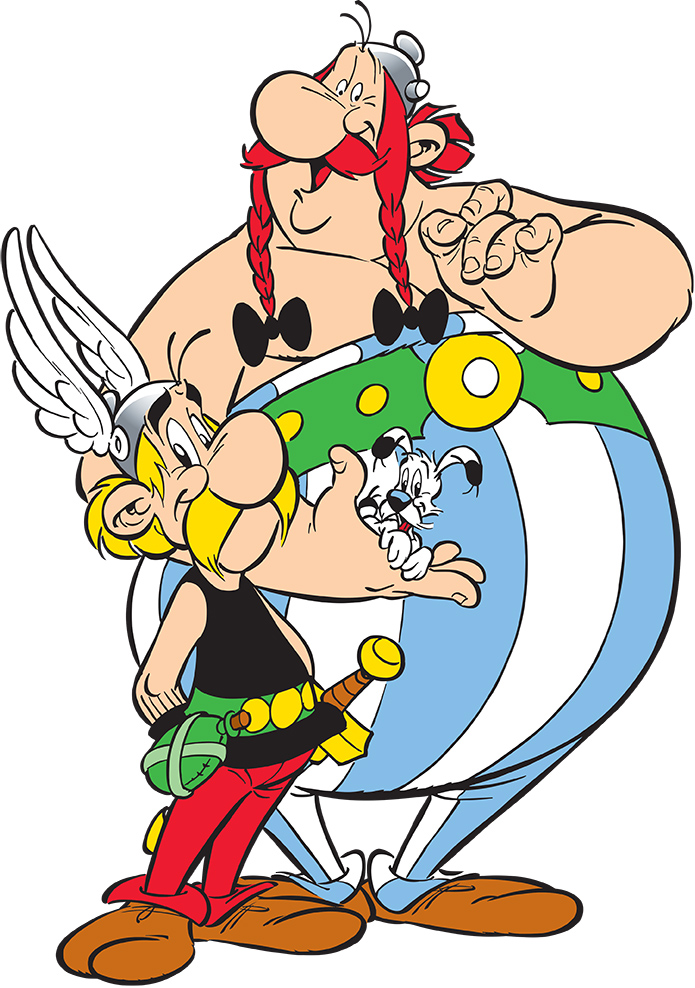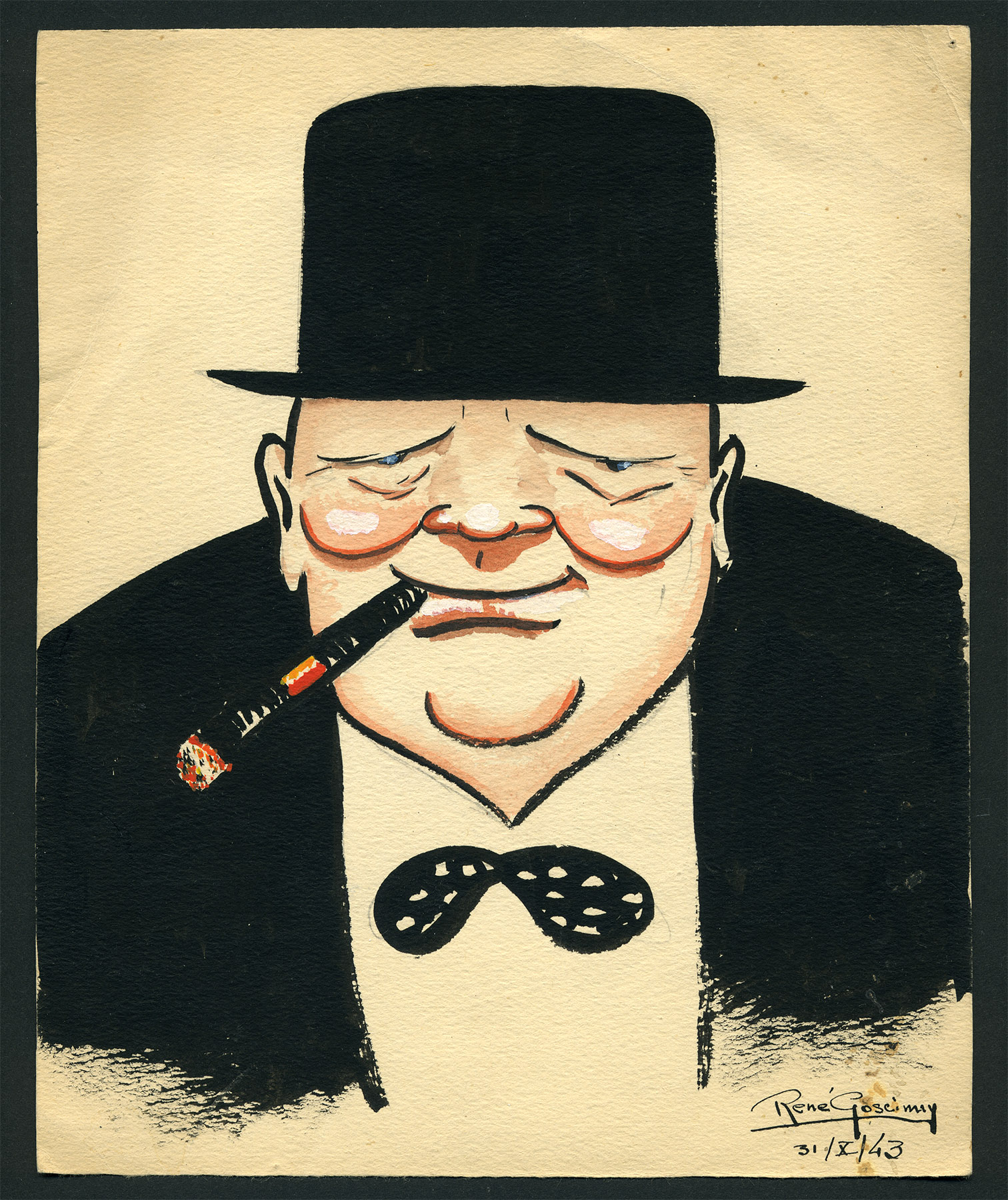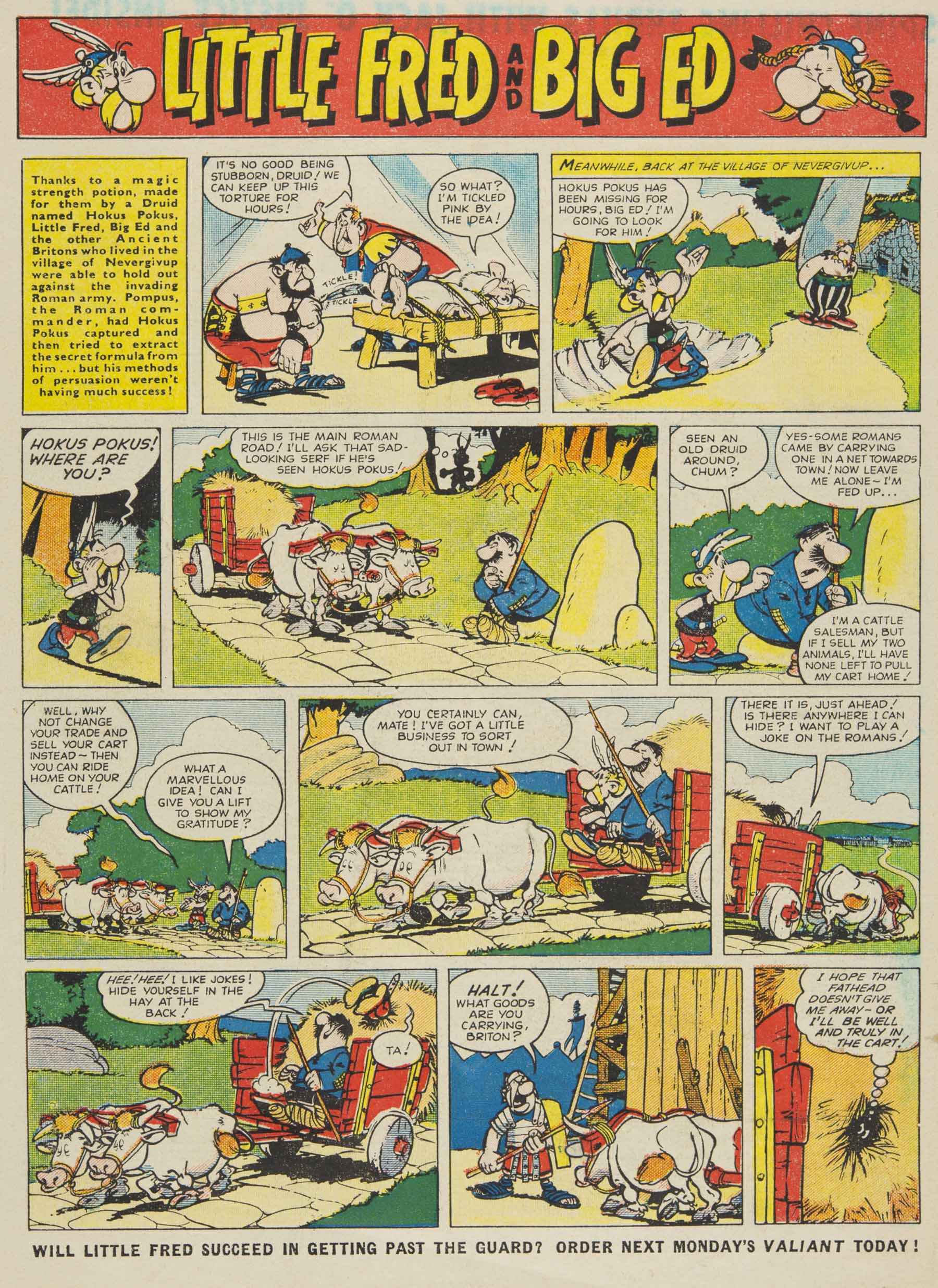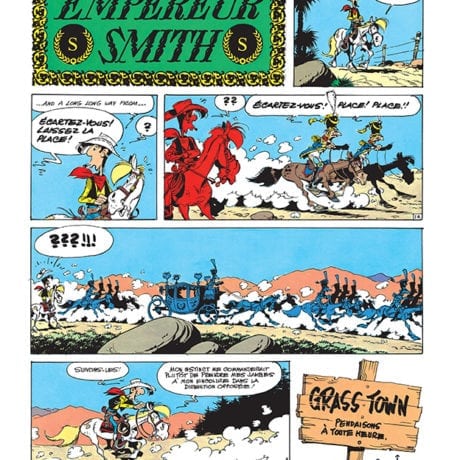
“I bet you didn’t realize that Astérix was Jewish,” I hear a woman say to her husband. We are on the top floor of London’s Jewish Museum, making our way around the major retrospective exhibition Astérix in Britain, devoted to the character’s creator, the French writer René Goscinny. Now Astérix the Gaul was not in fact Jewish—as far as we know he worshipped the Celtic gods Toutatis and Taranis—but Goscinny was.
Adapted from the one originally produced by the Musée d’Art et d’Histoire du Judaïsme in Paris, this exhibition sheds light on many little-known aspects of the life and work of the man behind the comic books. An immersive chronological trail, it includes rare original artworks, scripts, storyboards, personal letters and family photographs, and even the writer’s typewriter, which didn’t have an exclamation mark key—he had to improvise his own by combining a single quotation mark and a full stop.

Born in 1926, a child of Polish and Ukrainian immigrants, Goscinny grew up in Argentina before moving to New York. While there he worked in advertising, wrote and illustrated children’s books, and tried to establish himself as a cartoonist. On show is a testament to Goscinny’s persistence: a letter to the New Yorker asking if they had received five of his cartoons, which were all rejected. Having picked up some useful ideas about comics from the magazine Mad, Goscinny returned to Europe, where, in the early 1950s, he founded the Franco-Belgian comics magazine Pilote.
“Visually limber and witty, the Astérix books deliberately subverted established ideas about a hero’s appearance”
Goscinny was a spirited draughtsman, but it was as a scriptwriter that he produced his most seminal work, in collaboration with illustrators such as “Morris” (Maurice de Bevere), on the adventures of Lucky Luke, set in the Far West, and Jean-Jacques Sempé, on the hilarious Petit Nicolas series of children’s books. “I think one must write for comic books in the same way as one must write for the cinema,” Goscinny said about his scripts, which included highly detailed descriptions of what the drawings should show.

Overall, of course, Goscinny is most famous for his work on Astérix with illustrator Albert Uderzo. From 1959 to 1977 they produced twenty-four Astérix adventures together, which have been translated into more than 110 languages, including Latin and Hebrew.
The beloved Astérix series is considered one of the world’s most popular comics and it is easy to see why it has endured so well. Visually limber and witty, the Astérix books deliberately subverted established ideas about a hero’s appearance: neither the small, pugnacious Astérix nor the gloriously fat and greedy Obélix look like archetypal alpha males. Goscinny played a central role in the cultural revolution that transformed a genre perceived and marketed exclusively as books for children into a completely new and highly admired medium; the “ninth art”, deserving of serious scholarship and enjoyed by children and adults alike.
Although steeped in knowledge of ancient history (some of Goscinny’s extensive research library is on display), the stories wear their erudition very lightly, brilliantly bridging popular and high culture. With Astérix, Goscinny and Uderzo created a totally self-contained cultural world, whose appealing suppleness and humour also made it translatable and intelligible the world over. In particular, the books were exceptionally well translated into English by the inspired Anthea Bell, who even managed to improve some of the jokes (for example changing the druid’s French name, Panoramix, to Getafix).

The exhibition is full of rich visual archive material, including television interviews with Goscinny, which give a sense of a self-effacing, thoughtful and very funny man, and getting close to the artworks helps to understand the influences that shaped them. Although Astérix isn’t technically Jewish, the exhibition does bring Goscinny’s heritage to the fore. He grew up during the Second World War and it is perhaps no accident that he cast his hero as a plucky underdog rallying against a merciless invader and oppressor (Roman occupation in the year 50 BC in the case of the strips). Certainly, when the adventures of the indomitable Astérix le Gaulois were first published in Pilote magazine in 1959, echoes of more recent history would have been clear to many readers.

Goscinny’s genius lay in recasting the invasion scenario through the eye of a parodist: the influence of Laurel and Hardy is discernible in the Astérix/Obélix double act and the adventures of the irrepressible Gaul gave its creator much scope for comic anachronism and the debunking of national clichés. The writer’s fictional world was fed by his Eastern European heritage and enriched by his years of exile in Argentina and New York, but it is also deeply expressive of traditional French culture. Goscinny died in 1977 of a heart attack, aged fifty-one. It was “as if the Eiffel Tower had fallen down”, said one French obituary.
Images © 2018 Les Editions Albert Rene / Goscinny-Uderzo unless stated






